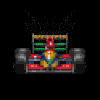n smikle wrote:Predictive controls can still be done mechanically.
In fact Mechanical controller's are quite common in industry. Mechanical controller's exist for just about everything.
So I do not put it past the F1 engineers...
Yes, everyone agree with this. Its possible to make a mechanical controller output theoretically any signal you want.
The point you are missing is that converting that "signal" into a force big enough to move the body is impossible unless you have a powered actuator.
If you imagine a suspension is a series of mechanisms strung together with each degree of freedom having a state defined by its force and velocity (its instantaneous power). A passive system, by definition, can only work with each degree of freedom having opposing signs of force and velocity because it can only dissipate power. In simpler terms each moving part can only transmit forces in the opposite direction to the way its moving - i.e. if you apply a compressive force to a spring, it will only compress, not extend.
An active system can do what it wants. It can dissipate energy like a passive element and it can provide energy from its power source. If you apply a compressive force to a hydraulic cylinder it will still extend if the controller is telling it to. Like the honey badger, it doesn't give a ---.
An active system can work in all 4 quadrants of the force-velocity plane. A passive system can only work in quadrants 2 and 4. This effectively halves your capability to move how you want under a given load.
You can't make a passive suspension move up when you push down on it. That would be a perpetual motion machine.



